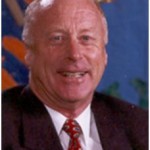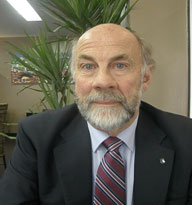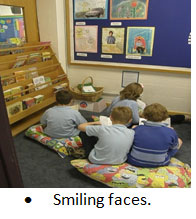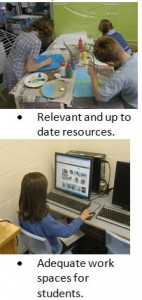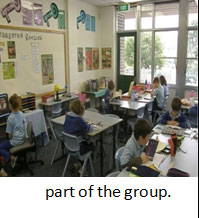Assessing Student Learning
This article by two of our regular contributors, Ms Ellen Cornish and Dr Don Jordan, contributes to the discussion about Child Centred learning as it provides a practical example of how assessment is about more than testing rote learning. The article looks assessment of learning, assessment for learning and assessment as learning. A comprehensive assessment matrix is provided to support assessment on a unit of work related to the Olympic Games.
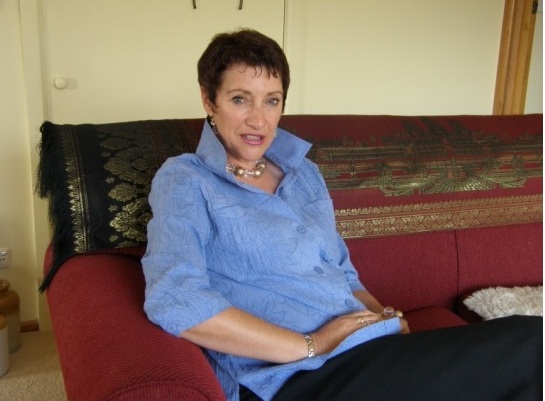 |
Ellen Cornish is a very experienced Early Childhood and Primary School teacher from Hobart, Tasmania, Australia. |
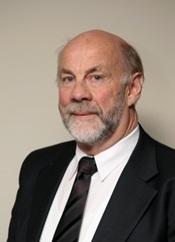 |
Dr Don Jordan had an extensive career in Tasmanian schools and completed his doctorate at Curtin University. |
Both Don and Ellen have had experience in other countries, either as visiting teachers or consultants. They have contributed several articles to SCLT.
What can this student say, write, or create to show me they understand what they have been learning?
Ms Ellen Cornish and Dr Don W Jordan
Student assessment is central to effective teaching and learning in a Child Centred classroom, to assist teachers to teach for understanding, and to give students the opportunity to demonstrate their learning. There are many ways to assess student learning, ranging from summative standardized and teacher created tests, to more formative student focussed activities. It is not our intention in this article to summarize the different assessment possibilities, but to discuss the student assessment strategies used in our primary classroom in Tasmania, Australia.
Effective assessment can be in many forms including text based, visual presentations, group discussions, teacher and student initiated rubrics, or some other. We found one useful strategy was to imagine a successful student demonstrating in their chosen way, the thinking and learning we hoped to see from them. A powerful way, best described by Anne Reeves (2011), was to visualize successful learners and ask. “What can this student say, write, or create to demonstrate an understanding of the work that was undertaken? What questions can he answer? What tasks can he perform?”
It was important for us to establish classroom strategies and routines that provided opportunities for our students to demonstrate their learning, in their chosen ways. Depending on the interests and talents of the student, this included text based or art and drama activities or conversations with teachers or classmates. To help us take account of the different talents and abilities demonstrated by our students, we drew on Howard Gardner’s (1983) Multiple Intelligences (MI), to inform our assessment strategies and to provide a useful framework to help us understand that our students have different strengths, learn in a variety of ways and at different rates.
Gardner extends the traditional academic intelligences of linguistic and logical mathematical intelligences (IQ test), to include spatial, visual, musical, bodily kinaesthetic, interpersonal, intrapersonal, and naturalist intelligences. This implies that students generally may engage higher order thinking and problem solving in an area of intellectual strength.
For example, a student gifted in linguistic intelligence may produce a creative and original piece of writing but may struggle with a task that demands high-level spatial awareness. We gave our students the opportunity to foster their intellectual strength and curiosity through a collection of guided choices e.g. art/craft drama, music etc. and teacher directed activities.
This was a powerful way for us to engage our students in learning, whilst giving them opportunities to develop their multiple intelligences. We always ensured that any such choices were under our supervision, thus ensuring students were engaged in activities that fostered a deeper understanding.
We furthered ensured that our students were able to engage in activities at a deeper level by drawing on strategies identified by Benjamin Bloom.
Bloom (1956), identified six levels of understanding, from the simple recall or recognition of facts, as the lowest level, through increasingly more complex and abstract mental levels, to the highest order which is classified as evaluation and creating. Bloom’s six levels include:
Remembering: Retrieving, recognizing, and recalling relevant knowledge from long-term memory through labelling, listing, memorizing, naming, ordering, recognizing, relating recalling, repeating, reproducing .
Understanding: Constructing meaning from oral, written, and graphic messages through interpreting, exemplifying, classifying, summarizing, inferring, comparing, and explaining.
Applying: choosing, demonstrating, dramatizing, illustrating, interpreting, practicing, scheduling, sketching, solving, using, and writing.
Analysing: Breaking material into constituent parts, determining how the parts relate to one another and to an overall structure or purpose through differentiating, organizing, and attributing, calculating, comparing, examining.
Evaluating: Making judgments based on criteria and standards through checking and critiquing through arguing assessing, choosing defending, predicting, selecting.
Creating: Putting elements together to form a coherent or functional whole through reorganizing elements into a new pattern or structure through generating, planning, or producing, appraising, arguing, assessing, attaching, choosing comparing, defending estimating, judging, predicting, (Anderson & Krathwohl, 2001, pp. 67-68)
To enable our students demonstrate their undrstanding, we organised our classroom activities using the Bloom / Gardner matrix, as attached.
References
Bloom, Benjamin S. & David R. Krathwohl. (1956). Taxonomy of educational objectives: The classification of educational goals, by a committee of college and university examiners. Handbook 1: Cognitive domain. New York, Longmans.
Gardner, Howard (1983) Frames of Mind: The theory of multiple intelligences, New York: Basic Books.
Anne R Reeves. Where Great Teaching Begins, Planning for Student Thinking and Learning. ASCD 2011.
We have modified the Olympic Games, Gardner / Bloom matrix, created by Miguel Aguilera (St Joseph’s, Bulli – 2004)
 Click picture to view table
Click picture to view table
บทความนี้เขียนโดยสองผู้ร่วมงานของ SCL เอเลนคอร์นิชและดอกเตอร์ ดอน จอร์แดน ร่วมกันแสดงความคิดเห็นเกี่ยวกับการเรียนรู้โดยมีนักเรียนเป็นศูนย์กลาง แสดงกรณีศึกษาว่าการประเมินผลนั้นเป็นมากกว่าการวัดผลแบบการเรียนรู้แบบท่องจำ บทความแสดงถึงการประเมินการเรียนรู้, การประเมินเพื่อการเรียนรู้และการประเมินเสมือนการเรียนรู้ วิธีการวัดผลแบบครอบคลุมนี้สร้างขึ้นเพื่อสนับสนุนการประเมินผลการทำงานที่เกี่ยวข้องกับการแข่งขันกีฬาโอลิมปิกส์
 |
เอเลน คอร์นิช เป็นผู้มากด้วยประสบการณ์ด้านเด็กเล็กและเด็กก่อนวัยเรียน อาจารย์จากโรงเรียนโอบอร์ต รัฐทาสมาเนีย ออสเตรเลีย |
 |
ดอกเตอร์ดอน จอร์แดน มีประสบการณ์ผ่านการทำงานมาหลากหลายในโรงเรียนทาสมาเนียน และสำเร็จการศึกษาระดับปริญญาเอกจากมหาวิยาลัยเคอร์ติน |
ทั้งดอนและเอเลนยังมีประสบการณ์ในประเทศอื่นด้วย ทั้งในฐานะผู้เยี่ยมชนการสอนและที่ปรึกษา พวกเขาเขียนบทความหลายชิ้นให้กับ SCL
อะไรที่นักเรียนคนนี้สามารถพูด, เขียน หรือทำบางอย่างเพื่อแสดงให้เราเห็นว่าเขาเข้าใจสิ่งที่เขาได้เรียนรู้มา?
นางสาวเอเลน คอร์นิช และดอกเตอร์ ดอน ดับบลิว จอร์แดน
การประเมินผลนักเรียนเป็นวิธีการที่มีความสำคัญสำหรับการเรียนและการสอนในชั้นเรียนที่มีนักเรียนเป็นศูนย์กลาง เพื่อเป็นตัวช่วยในการสอนเพื่อความเข้าใจสำหรับครู และเป็นโอกาสให้นักเรียนได้แสดงให้เห็นการเรียนรู้ของพวกเขา การประเมินนักเรียนมีหลายวิธี ตั้งแต่การประเมินโดยหน่วยงานกลางไปจนถึงการทดสอบที่ครูออกแบบเองเพิ่มเติมขึ้นมาให้เหมาะสมกับสิ่งที่นักเรียนกำลังศึกษา บทความนี้ไม่ได้จะกล่าวถึงวิธีการประเมินในรูปแบบต่างๆ แต่เป็นการแสดงความเห็นถึงวิธีการประเมินที่พวกเราใช้อยู่ในชั้นเรียนที่ทาสมาเนีย ประเทศออสเตรเลีย
วิธีการประเมินที่เหมาะสมสามารถมีได้หลายรูปแบบ รวมไปถึงการใช้ตำราเรียน การนำเสนอภาพนิ่ง การอภิปรายกลุ่มหรืออื่นๆ เราพบว่าวิธีหนึ่งที่ได้ผลดีคือจินตนาการถึงความสำเร็จที่นักเรียนจะแสดงให้เห็นในทางที่พวกเขาเลือก ความคิดและการเรียนรู้ที่เราหวังจะได้เห็นจากพวกเขา ทางที่มีประสิทธิภาพ อธิบายไว้อย่างดีโดย แอน รีฟส์ ( 2011) คือการมโนภาพผู้เรียนที่ประสบความสำเร็จและถามว่า “นักเรียนคนนี้จะสามารถพูด เขียน หรือสร้างสรรค์บางอย่างเพื่อแสดงถึงความเข้าใจในงานที่ได้รับมอบหมายอย่างไร? สามารถตอบคำถามอะไรได้? สามารถทำงานอะไรได้บ้าง?”
เป็นเรื่องสำคัญที่เราจะต้องสร้างระบบห้องเรียนและแผนการสอนที่เปิดโอกาสให้นักเรียนของเราได้แสดงออกถึงสิ่งที่พวกเขาเรียนรู้ ในแบบที่พวกเขาเลือก ตามความสนใจและความสามารถ นี่รวมไปถึงการทดสอบตามตำราหรือการแสดงศิลปะและการละคร หรือการแสดงความคิดเห็นกับอาจารย์หรือเพื่อนร่วมชั้น เราใช้ทฤษฎีพหุปัญญาของโฮเวิร์ด การ์ดเนอร์ (1983) เป็นหลักในการประเมินของเราและเพื่อเป็นกรอบกว้างๆที่จะช่วยให้เราเข้าใจว่านักเรียนของเรามีข้อดีแตกต่างกัน เรียนรู้ในวิธีการที่หลากหลายต่างกัน
การ์ดเนอร์ขยายการวัดระกับความรู้แบบดั้งเดิมจากความรู้ทางวิชาการด้านภาษาและตรรกะวิชาทางคณิตศาสตร์ (IQ test) มาเป็นรวมไปถึงด้านมิติสัมพันธ์, ภาพ, ดนตรี, การเคลื่อนไหวของร่างกาย, มนุษยสัมพันธ์, การสื่อสารกับตัวเอง และธรรมชาติวิทยา หมายถึงว่านักเรียนอาจใช้สิ่งเหล่านี้ร่วมกันเป็นส่วนหนึ่งของความฉลาดในการคิดตรรกะที่สูงขึ้นและเพื่อแก้ปัญหา
ยกตัวอย่างเช่น นักเรียนที่มีความสามารถทางภาษาอาจสร้างสรรค์ผลงานด้านการเขียนแต่อาจมีข้อติดขัดในงานที่ต้องอาศัยความรู้ขั้นสูงด้านมิติสัมพันธ์ เราให้โอกาสนักเรียนของเราที่จะพัฒนาความรู้และความอยากรู้อยากเห็นของพวกเขาผ่านตัวเลือกต่างๆที่มีให้ เช่นศิลปะ, งานหัตถกรรม ฯลฯ และมีครูเป็นผู้ดูแล
นี่เป็นวิธีที่มีประสิทธิภาพมากสำหรับเราที่จะดึงดูดนักเรียนให้เรียนรู้ โดยการให้โอกาสพวกเขาได้พัฒนาพหุปัญญาของพวกเขา เรามั่นใจว่าทางเลือกต่างๆดังกล่าวอยู่ใต้การดูแลของเรา จึงมั่นใจว่านักเรียนได้มีส่วนร่วมในกิจกรรมที่พัฒนาความเข้าใจให้ลึกซึ้งยิ่งขึ้น
เพื่อให้มั่นใจว่านักเรียนของเราได้รับความรู้ที่เพิ่มขึ้นโดยการเข้าร่วมกิจกรรมในระดับที่สูงขึ้นเราใช้ระบบโครงสร้างที่สร้างโดยเบนจามิน บลูม
บลูม(1956) กำหนดระดับขั้นของความเข้าใจไว้หกระดับ ตั้งแต่การจำหรือรับรู้ข้อมูลอันเป็นลำดับต่ำสุด ไปสู่ระดับที่ซับซ้อนยิ่งขึ้นและอาศัยการทำงานของสมองมากขึ้นไปจนถึงระดับสูงสุดซึ่งคือการประเมินผลและการสร้างสรรค์ หกระดับตามหลักของบลูมประกอบด้วย
ความจำ ความสามารถในการจำความรู้ต่าง ๆ ที่ได้เรียนรู้มา ด้วยการ นิยาม, จับคู่, เลือก, จำแนก, บอกคุณลักษณะ, บอกชื่อ, ให้แสดงรายชื่อ, บอกความสัมพันธ์
ความเข้าใจ ความสามารถในการแปลความ ขยายความ และเข้าใจในสิ่งที่ได้เรียนรู้มา แปลความหมาย, เปลี่ยนแปลงใหม่, แสดง, ยกตัวอย่าง, อธิบาย, อ้างอิง, สรุป, บอก, รายงาน, บรรยาย, กำหนดขอบเขต, ฯลฯ
การนำไปใช้ ความสามารถในการใช้สิ่งที่ได้เรียนรู้มาเป็นวัตถุดิบก่อให้เกิดสิ่งใหม่ ประยุกต์ใช้, จัดกระทำใหม่, แก้ปัญหา, จัดกลุ่ม, นำไปใช้, เลือก, ทำโครงร่าง, ฝึกหัด, คำนวณ, ฯลฯ
การวิเคราะห์ ความสามารถในการแยกความรู้ออกเป็นส่วนแล้วทำความเข้าใจในแต่ละส่วนว่าสัมพันธ์คือแตกต่างกันอย่างไร จำแนก, จัดกลุ่ม, เปรียบเทียบ, สรุปย่อ, บอกความแตกต่าง, อธิบาย, วิเคราะห์, แยกส่วน, ทดสอบ, สำรวจ, ตั้งคำถาม, ตรวจสอบ, อภิปราย, ฯลฯ
การประเมิน ความสามารถในการตัดสินคุณค่าอย่างมีเหตุมีผลตั้งราคา, ตัดสินคุณค่า, พิจารณา, สรุป, ประเมิน, ให้น้ำหนัก, กำหนดเกณฑ์, การเปรียบเทียบ, แก้ไข, ปรับปรุง, ให้คะแนน
การสังเคราะห์ ความสามารถในการรวมความรู้ต่าง ๆ หรือประสบการณ์ต่าง ๆ ให้เกิดเป็นสิ่งแปลกใหม่ การออกแบบ, วางแผน, การแก้ปัญหา, การผลิต, การสร้างสูตร, ฯลฯ
เพื่อจะสามารถให้นักเรียนได้พัฒนาความเข้าใจของตน เราจัดการกิจกรรมในห้องเรียนโดยอาศัยวิธรการของบลูม/การ์ดเนอร์ตามตัวอย่างด้านล่าง

คลิกที่ภาพ


 To paraphrase U.S. President Bill Clinton’s famous election mantra “it’s the economy, stupid”, my answer to what should be taught to students in the 21st century is: it’s the three R’s, stupid.
To paraphrase U.S. President Bill Clinton’s famous election mantra “it’s the economy, stupid”, my answer to what should be taught to students in the 21st century is: it’s the three R’s, stupid.



